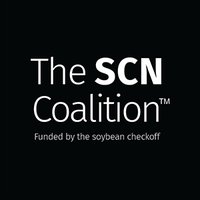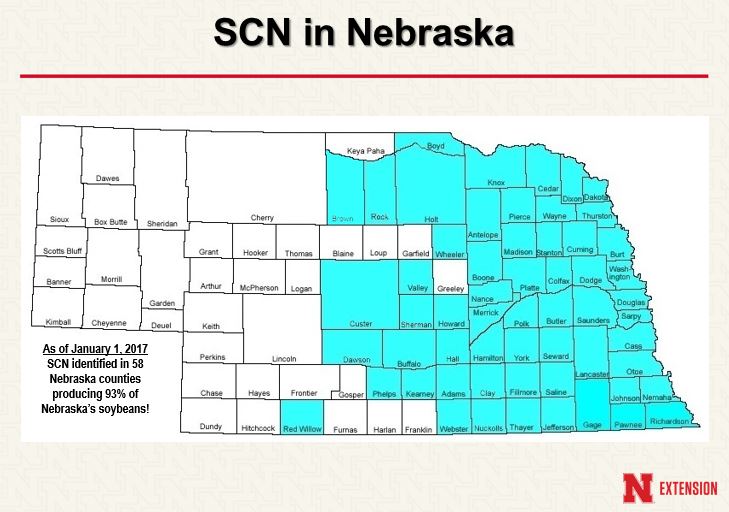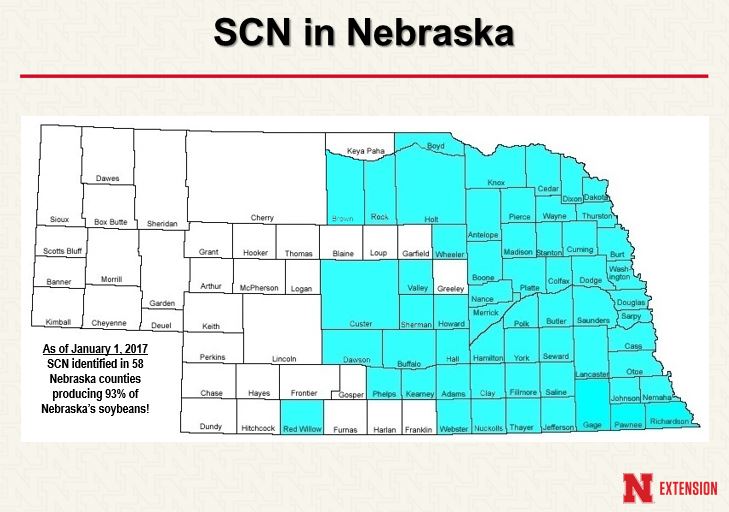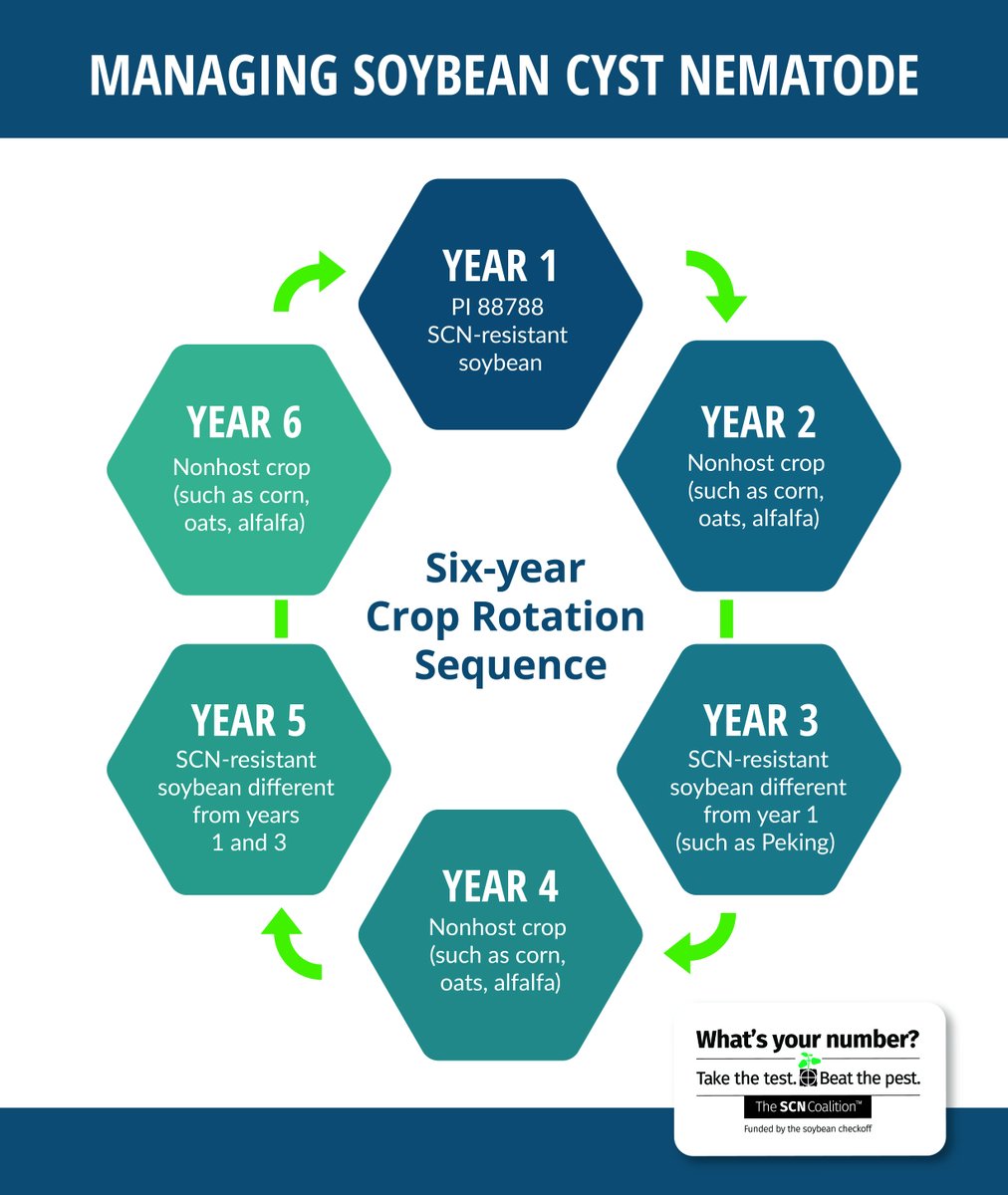
The SCN Coalition
@TheSCNCoalition
The SCN Coalition is a public/checkoff/private partnership formed to help the agricultural industry speak with one voice about soybean cyst nematode management.
ID:960591359462821888
http://TheSCNCoalition.com 05-02-2018 19:10:01
1,8K Tweets
1,7K Followers
982 Following


#SCN can be stealthy, nibbling away #soybean yield potential but leaving few aboveground clues. Our new SCN Profit Checker tool shines a spotlight on SCN’s economic damage and the need for active management. Try it today. United Soybean Board
#FarmingTechnology
thescncoalition.com/profitchecker/



In Illinois, #SCN is the No. 1 yield robber of soybeans and has been found in every county.
To know if your management program is working, University of Illinois Illinois Extension experts recommend testing soil to know SCN numbers and HG types. Explore more.
bit.ly/3ISt1cR



Why should soybean farmers know their source of #SCN resistance? #Nematode diagnostician angela tenney from MSU MSU Extension explains how this information guides better management decisions.
bit.ly/4aeAPlq



Regularly test fields for #SoybeanCystNematode ( #SCN ) to A) understand what levels you’re dealing with, and B) ensure your active management program is effective.
What’s your number? Find a #soiltesting lab near you.
bit.ly/3TzgzVQ

#SCN has been found in 59 #Nebraska counties that produce 93% of the state’s #soybeans — some soil samples had over 136,000 eggs per 100 cc!
See what University of Nebraska-Lincoln Nebraska Extension experts recommend for #soilsampling and active management: bit.ly/4cxLGIm.


#SCN has been found in 59 #Nebraska counties that produce 93% of the state’s #soybeans — some soil samples had over 136,000 eggs per 100 cc!
See what University of Nebraska-Lincoln Nebraska Extension experts recommend for #soilsampling and active management: bit.ly/4cxLGIm.




Did you know the recommended #SoybeanCystNematode ( #SCN ) management strategies depend on where grow soybeans?
Learn more about the presence of SCN in your state and see university expert recommendations for #soiltesting and active management.
bit.ly/3tsUayS


You know #SCN is in your soybean fields through a soil test. What’s next? Iowa #soybean farmer Dan Ory asks Iowa State University nematologist Greg Tylka about building an active SCN management plan.
Let’s Talk Todes: bit.ly/3VsvWR3.
bit.ly/3x2373B


